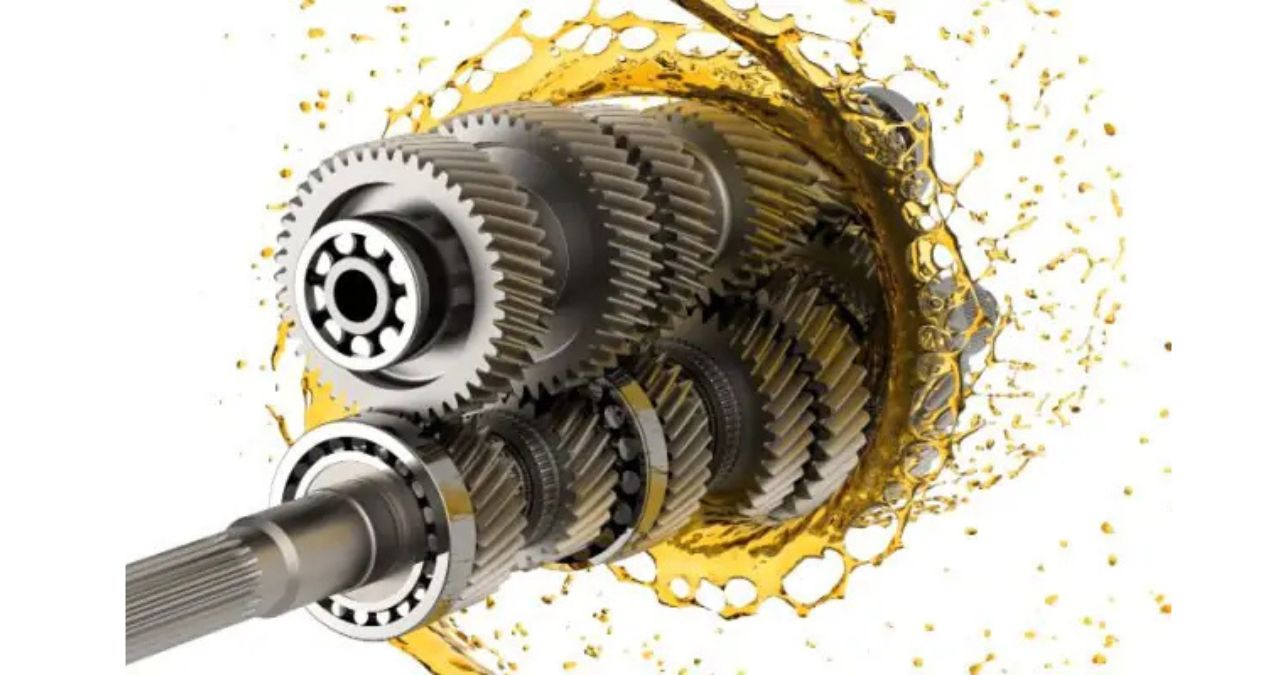TECHNOLOGY
Thruster Finance Explained: How It Revolutionizing the DeFi Landscape

The world of finance is undergoing a seismic shift, and decentralized finance (DeFi) is at the forefront of this revolution. As traditional banking systems grapple with inefficiencies and limitations, innovative solutions are emerging to empower individuals like never before. One standout player in this space is Thruster Finance—a platform that promises not just to disrupt but to redefine how we think about financial transactions.
Imagine a world where you’re not at the mercy of centralized institutions, where your assets work for you without unnecessary hurdles. That’s exactly what Thruster Finance aims to achieve within the DeFi landscape. With its cutting-edge technology and user-centric approach, it’s ready to change the game for investors and everyday users alike.
Curious about how Thruster Finance can transform your financial experience? Let’s delve into what sets it apart from conventional finance models and explore its myriad benefits.
The Problem with Traditional Finance
Traditional finance is often characterized by its complexity and lack of accessibility. Many people find financial products confusing, making it difficult for them to make informed decisions. This opacity can lead to a sense of distrust among consumers.
Fees are another major issue. Banks and financial institutions frequently impose high charges for services that should be straightforward. These costs can eat into savings and investments, leaving customers feeling exploited rather than supported.
Furthermore, traditional finance operates on rigid structures that don’t accommodate everyone’s needs. Access to loans or credit often hinges on outdated criteria like credit scores, excluding many potential borrowers from essential financial resources.
The centralized nature of banks means a single point of failure exists in the system. When economic crises hit, it’s everyday individuals who suffer most while large institutions receive bailouts with taxpayer money. This systemic imbalance raises serious questions about fairness and equity in the financial landscape.
How Thruster Finance is Disrupting the Status Quo
Thruster Finance is challenging traditional finance by leveraging the power of decentralized technology. With its innovative approach, it eliminates intermediaries and reduces transaction costs. This shift empowers users to have direct control over their assets.
One standout feature is its ability to facilitate peer-to-peer lending and borrowing. Participants can engage in transactions seamlessly without relying on banks or financial institutions.
Moreover, Thruster Finance employs smart contracts, ensuring transparency and security in every interaction. These self-executing contracts eliminate risks associated with trust.
Additionally, the platform offers a user-friendly interface that appeals to both seasoned investors and newcomers alike. This accessibility invites more individuals into the DeFi space.
The result? A democratized financial landscape where everyone has equal opportunities to participate and thrive outside the constraints of conventional banking systems.
Key Features of Thruster Finance
Thruster Finance brings a suite of innovative features designed to enhance the DeFi experience. At its core, it utilizes advanced smart contracts that ensure seamless transactions without intermediaries.
One standout feature is its liquidity pools. These enable users to earn rewards by providing assets for trading. This not only adds depth to the market but also incentivizes participation from all levels of investors.
Another remarkable aspect is the user-friendly interface. Thruster Finance focuses on accessibility, allowing even newcomers to navigate effortlessly through various functionalities.
Security measures are top-notch too. The platform employs robust auditing processes and multi-signature wallets, safeguarding users’ funds against potential threats.
Moreover, cross-chain compatibility broadens the reach of Thruster Finance, connecting different blockchain ecosystems and expanding opportunities for users everywhere.
Benefits of using Thruster Finance
Thruster Finance offers a myriad of benefits that set it apart in the DeFi space. One of its standout features is accessibility. Users from any corner of the globe can engage with financial services without traditional barriers.
Security is another critical advantage. Leveraging blockchain technology, Thruster ensures that transactions are transparent and tamper-proof. This not only builds trust but also protects users’ assets.
Additionally, Thruster Finance promotes autonomy by allowing individuals to control their finances directly. There’s no intermediary involved, giving users full ownership over their investments.
Another significant benefit is lower fees compared to conventional finance systems. With fewer intermediaries and streamlined processes, users enjoy more cost-effective solutions for trading and investing.
Thruster’s innovative tools empower users with advanced analytics and insights, enabling smarter decision-making in real time. This combination of features makes it an appealing choice for both novice and seasoned investors alike.
How to Get Started with Thruster Finance
Getting started with Thruster Finance is simple and straightforward. First, you need to set up a cryptocurrency wallet compatible with the platform. Popular choices include MetaMask and Trust Wallet.
Once your wallet is ready, purchase some cryptocurrency like Ethereum or stablecoins such as USDC. You’ll use these assets for transactions within Thruster Finance.
Next, visit the official Thruster Finance website. Connect your wallet by following the prompts on the interface; this secures access to all features available.
Explore the various services offered—like lending, borrowing, and yield farming—to find what suits your financial goals best. Each service typically has detailed guides accessible on-site to help navigate their functionalities.
Always stay updated on community discussions and project announcements through forums or social media channels related to Thruster Finance for optimal engagement in this evolving landscape.
Potential Risks and Considerations
While Thruster Finance presents exciting opportunities, it’s important to acknowledge potential risks. The DeFi landscape can be volatile. Prices of assets may fluctuate dramatically, which could lead to unexpected losses.
Smart contracts are foundational to Thruster Finance. However, they aren’t infallible. Bugs or vulnerabilities in these codes can expose users to hacks or loss of funds.
Regulatory scrutiny is another concern. As governments catch up with the rapid growth of DeFi, regulatory changes could impact operations and user experiences within platforms like Thruster Finance.
Liquidity issues might arise during market downturns. Users should be cautious when trading large amounts as it can result in slippage and unfavorable pricing.
Understanding these factors is crucial for anyone looking to engage with Thruster Finance responsibly. Being informed helps mitigate risk while navigating this innovative financial frontier.
The Future of DeFi and Thruster Finance
The future of DeFi is bright and full of potential. Thruster Finance stands at the forefront, pushing boundaries in decentralized finance.
As more users seek transparency and accessibility, platforms like Thruster are stepping up to meet these demands. The incorporation of advanced technologies will streamline transactions and improve user experiences.
We can expect further integration with traditional finance systems. This hybrid model could bridge gaps between conventional banks and innovative DeFi solutions.
Moreover, community governance will play a significant role in shaping Thruster’s evolution. Users will have a say in decision-making processes, driving engagement and loyalty.
Sustainability is also becoming crucial. As environmental concerns rise, eco-friendly practices within DeFi ecosystems may gain traction through initiatives led by platforms like Thruster Finance.
This transformative journey promises new financial paradigms that prioritize inclusivity while leveraging cutting-edge technology for better service delivery.
Conclusion
As the digital finance landscape continues to evolve, Thruster Finance stands out as a beacon of innovation. By addressing the shortcomings of traditional financial systems and embracing decentralized principles, it offers users greater autonomy and transparency. The platform’s unique features enhance usability while ensuring security.
With numerous benefits driving user adoption, including lower fees and accessibility for everyone, it’s clear that Thruster Finance is shaping the future of DeFi. However, potential risks should not be overlooked; understanding these factors is essential for anyone looking to navigate this space effectively.
For those interested in harnessing the power of decentralized finance through Thruster Finance, now may be the ideal time to explore its offerings. This burgeoning realm promises exciting opportunities and challenges alike—keeping both enthusiasts and skeptics on their toes as they adapt to ongoing changes in DeFi dynamics.
TECHNOLOGY
Enhancing Heavy Equipment Performance through Effective Lubrication

The Importance of Lubrication in Heavy Machinery
In the intricate world of heavy machinery, lubrication is not merely a routine task—it’s a key determinant of operational success and equipment longevity. Lubrication plays a pivotal role by minimizing friction amongst the myriad moving parts, which in turn boosts the overall operational efficiency of the equipment. Without adequate lubrication, wear and tear accelerate, causing parts to degrade faster and leading to unplanned downtime and expensive repairs.
Ensuring well-lubricated machinery is crucial in industries prone to high demand and intensive operations. It maintains the delicate balance between efficiency and wear, promoting a seamless and continuous workflow. Many industry professionals use trusted solutions like hydraulic oil Charlotte NC to meet these needs. Selecting the right type of lubricant and applying it at the correct intervals can significantly extend machinery life. Effective lubrication management is not only a cost-saving measure but a strategic approach that can distinguish successful operations from those plagued by inefficiency and breakdowns.
Types of Lubricants and Their Benefits
Lubricants are a vast category of varied substances designed for specific applications and operational environments. The choice of lubricants can greatly enhance machinery’s function. Oils, like motor and gear oils, offer different benefits than greases. Motor oils, for example, are engineered to handle the extreme conditions within engine chambers. In contrast, gear oils protect against high-pressure contacts and heavy loads in gearboxes.
Each lubricant’s properties, such as viscosity, thermal stability, and load-bearing capacity, determine its suitability for particular machinery parts. Selecting the correct type enhances machinery longevity and performance, mitigating the risks of mechanical failures. As industries demand more from their equipment, optimizing lubrication practices becomes critical and requires attention to detail and thorough understanding.
Key Factors in Choosing the Right Lubricant
Choosing the proper lubricant involves more than following manufacturer recommendations—it’s about understanding the specific needs of your machinery and its operating environment. Critical factors to consider include the operating temperature range, the type of load the machinery will endure, and the expected duration of operations. The wrong choice can result in inadequate protection, leading to increased wear or even catastrophic mechanical failures.
Temperature fluctuations are particularly significant as they impact the viscosity and, consequently, the performance of lubricants. High loads require lubricants with robust film strength, while extended operation times necessitate those with high thermal stability.
Maintenance Strategies for Optimal Performance
Consistent upkeep is crucial for the well-being of equipment and lubricants. It includes routine inspections to identify early signs of breakdown or contamination. Proactive maintenance strategies, such as scheduled inspections and oil analysis, help prevent unexpected equipment failures and ensure smooth operations. A consistent lubrication schedule enhances equipment reliability and performance, reducing downtime and maximizing productivity. Furthermore, advanced monitoring and analysis tools can optimize maintenance efforts by identifying potential issues before they escalate into significant problems.
Innovations in Lubrication Technology
The lubrication industry is experiencing significant technological advancements that improve machinery maintenance. Synthetic lubricants now offer better thermal stability and have a reduced environmental impact. Digital technologies like smart sensors are also being incorporated into lubrication practices. These innovations enable real-time monitoring of lubricant conditions and facilitate predictive maintenance strategies. Consequently, companies can preserve their competitive advantage and adjust to evolving operational requirements, improving machinery performance and decision-making processes.
TECHNOLOGY
The Unseen World of Double-Ended Probes: Applications and Innovations

Introduction to Double-Ended Probes
Double-ended probes are essential tools used across many industries, recognized for their capability to deliver precise and reliable measurements. These instruments, which may seem modest at first glance, are crucial in electronics, automotive testing, and medical diagnostics due to their unparalleled accuracy and adaptability. The double ended probe has undergone significant transformations over the years to meet the dynamic demands of these fields, evolving from basic tools into technologically advanced instruments.
In the past, the development of probe technology was gradual, and its applications were relatively limited. However, with the rapid technological advancements of recent decades, these probes have witnessed a profound evolution, extending their reach to new applications and industries. Throughout this journey, the need for accuracy and precision has remained at the forefront, underscoring these tools’ significance in traditional and modern practices.
The Science Behind Precision Measurement
The integral function of double-ended probes is rooted in their innovative design, which facilitates precise contact and measurement. The unique architecture of these probes ensures consistent contact resistance, making them indispensable for high-accuracy assessments across various surfaces and materials. It is particularly significant in environments that demand high precision and reliability. Precision measurement is a cornerstone for industry and scientific research, as slight measurement deviations can substantially impact outcomes and applications. These precision instruments are crafted to work effectively in diverse conditions, whether in high-temperature environments or biological systems’ fragile operations. The science behind these probes is continually refined to ensure they meet ever-increasing demands for accuracy in challenging conditions, representing a blend of engineering prowess and technological advancement.
Common Applications Across Industries
Double-ended probes’ versatility is evident through their widespread applications in numerous industries. In the medical field, they are vital for noninvasive diagnostics, allowing healthcare professionals to obtain essential biological data reliably. Their role extends to monitoring and diagnostic tools, where precision is paramount to patient outcomes.
Moreover, in electronics, double-ended probes are indispensable for testing intricate circuits, ensuring that devices meet stringent operational and safety standards. They enable technicians to probe connections and pathways thoroughly, enhancing device reliability and performance. In the automotive sector, these probes are crucial for rigorous vehicle testing and quality assurance processes, ensuring that the vehicles meet performance and safety benchmarks before reaching the market.
Innovations in Probe Technology
Recent innovations in probe technology have driven the field into new realms of possibility. Probes have become more durable and resistant, providing enhanced measurement precision. These technological developments have addressed many older probes’ limitations, enabling more complex and varied applications. The introduction of cutting-edge designs and materials has contributed to achieving lower contact resistance, improved sensitivity, and easier integration into automated systems. These enhancements point to a future where probes will be even more adaptable and reliable, meeting the needs of emergent fields like nanotechnology and advanced electronics.
Challenges and Considerations
Despite the numerous advantages of double-ended probes, several challenges must be navigated to ensure optimal performance. Maintaining calibration and quality control is essential, as even minor deviations can compromise measurement accuracy. Regular maintenance and appropriate handling techniques are critical to prolonging the lifespan and functionality of these devices. Moreover, ensuring probe compatibility with various systems and environments poses challenges. As industries evolve, probe adaptability to fit new applications and conditions must also develop, which requires ongoing research and development efforts.
Future Prospects and Developments
The future of double-ended probes is poised for significant evolution, spurred by the demand for greater accuracy and multifunctionality. The ongoing development in probe technology promises to address current limitations and lead to innovations that enhance its capabilities and applications. As new fields emerge, the application of advanced probes in these areas will expand significantly. Predicted advancements include enhanced sensor integration for real-time data analysis and feedback, and improvements in miniaturization that will allow for deployment in highly complex and restricted environments. The potential developments in this space are vast, anticipating a future where probing technology becomes even more integral in our technological and scientific landscape.
Key Benefits and Advantages
Utilizing double-ended probes presents many advantages, including their precision and flexibility. These instruments provide a reliable means of acquiring accurate measurements, which is crucial across all domains that rely on high precision. In addition to their accuracy, these probes offer a cost-effective solution for many industries, delivering considerable value relative to their cost and maintenance. The ability to swiftly and accurately gauge various parameters ensures that probes remain the cornerstone of quality assurance and diagnostics in multiple sectors, making them indispensable tools in many professional disciplines.
Conclusion
Due to their remarkable precision and versatility, double-ended probes have etched an essential place in the modern industrial and scientific landscape. As technology advances, these tools are expected to play an increasingly pivotal role, continually expanding their capabilities and applications. Acknowledging the dynamic advancements and potential growth in this niche reinforces the indispensable nature of these instruments in enhancing measurement accuracy and technological efficacy across the board.
TECHNOLOGY
Discovering www durostechcom Your Ultimate Guide to Gaming, Software, and Hardware Insights

Welcome to the comprehensive guide on www durostechcom, your ultimate destination for all things gaming, software innovations, and hardware insights. Whether you’re a dedicated gamer, a tech enthusiast, or a professional seeking expert advice, DurosTech has something valuable to offer you. In this blog post, we will explore the diverse range of content available on www durostechcom, highlighting key features, popular articles, and how you can make the most out of this tech haven. Get ready to level up your knowledge and stay ahead of the curve in the fast-evolving tech world.
The Heart of www durostechcom
When you visit www durostechcom, you’ll experience a perfect blend of engaging content and expert tech assistance. From the latest gaming trends to in-depth software reviews, DurosTech covers it all. The website is designed to cater to a wide audience, making tech both accessible and exciting for everyone.
Trending Topics in Gaming
Gaming enthusiasts will find a treasure trove of information on DurosTech. Articles like “Designing for Engagement What Makes an Online Slot Game Addictive” and “Crafting a Better Minecraft Experience The Essentials You Need to Know” offer valuable insights and tips for both casual and hardcore gamers.
Exploring Software Innovations
Stay updated with the latest software developments by checking out articles like “Decoding IoT Strategies For Building Cutting-Edge Applications” and “The Importance of Stax’s Latest Funding Round”. These pieces provide a deep dive into innovative technologies and their impact on various industries.
Hardware Insights for Tech Enthusiasts
Hardware enthusiasts are not left behind, as DurosTech features comprehensive reviews and comparisons. For instance, “Nvidia Geforce RTX 2080 vs RTX 2070 Super” is a must-read for anyone looking to upgrade their gaming rig. The detailed analysis helps you make informed decisions about your tech investments.
Online Casino Trends and Tips
DurosTech also caters to the growing interest in online casinos. Articles like “Online Casino Dos and Don’ts for New Players to Succeed” and “Cultural Icons and Legends How History Influences Online Slot Game Themes” provide valuable guidance and historical context for new players.
Understanding Emerging Technologies
Emerging technologies are demystified through well-researched articles. The piece on “South Africa Joins Google’s Global Cloud Network” is a great example of how www durostechcom breaks down complex topics, making them easy to understand for readers of all levels.
Popular Video Games Spotlight
DurosTech frequently spotlights popular video games, offering reviews and insights. The article on the “GTA Franchise” gives an overview of one of the most successful video game franchises, providing both historical context and current trends.
Expert Tips and Guides
For those looking to improve their gaming skills, DurosTech offers expert tips and guides. The “5 Tips That Can Make You a Pro in Call of Duty Black Ops Cold War” is packed with actionable advice to help you dominate the game.
The Latest in Display Technology
Stay informed about the latest display technology with articles like “The New Low-Power OLED Display on Samsung S21”. This piece provides an in-depth look at the advancements in screen technology, helping you understand the benefits of the latest devices.
Photography and Imaging Insights
Photography enthusiasts will appreciate the detailed articles on imaging technology. “What Is I-Type Polaroid Film” is a fascinating read for anyone interested in the evolution of photography and the latest innovations in film.
Exploring Cloud Technology
Cloud technology is another area well-covered by www durostechcom. The article “South Africa Joins Google’s Global Cloud Network” explores the implications of this development, offering insights into how cloud technology is shaping the future.
Fintech Innovations
Stay ahead in the fintech world with articles like “The Importance of Stax’s Latest Funding Round”. This piece highlights significant developments in the financial technology sector, providing valuable information for both professionals and enthusiasts.
Engaging Community and Discussions
DurosTech fosters a vibrant community where readers can engage in discussions and share their insights. The comments section is a great place to connect with like-minded individuals and exchange ideas.
Conclusion
www durostechcom is your one-stop destination for all things tech, offering a wealth of information on gaming, software innovations, and hardware insights. Whether you’re looking to improve your gaming skills, stay updated on the latest software trends, or make informed decisions about tech investments, DurosTech has you covered. Explore the website today and join the thriving community of tech enthusiasts.
Ready to elevate your tech knowledge? Visit DurosTech now and immerse yourself in the world of cutting-edge technology and expert insights.
-

 BLOG9 months ago
BLOG9 months agoEscape to Tranquility Experience Grange Bardage Percheronne in Normandy
-

 LIFESTYLE9 months ago
LIFESTYLE9 months agoAir Jordan 1 Retro High Off-White University Blue
-

 SOCIAL MEDIA8 months ago
SOCIAL MEDIA8 months agoDecoding the Drive Social Media Pyramid Scheme Mystery
-

 LIFESTYLE9 months ago
LIFESTYLE9 months agoAir Jordan 4 Retro Metallic Purple
-

 BUSINESS8 months ago
BUSINESS8 months agoDemystifying 315-442-5267 Common Myths and Facts Revealed
-

 LIFESTYLE9 months ago
LIFESTYLE9 months agoAir Force 1 Shadow Pistachio Frost
-

 HOW-TO GUIDES8 months ago
HOW-TO GUIDES8 months agoShop Smart and Save with Goldengatemax.shop Online Guide
-

 FASHION7 months ago
FASHION7 months agoStepping into Style with Pink Jordan 1
